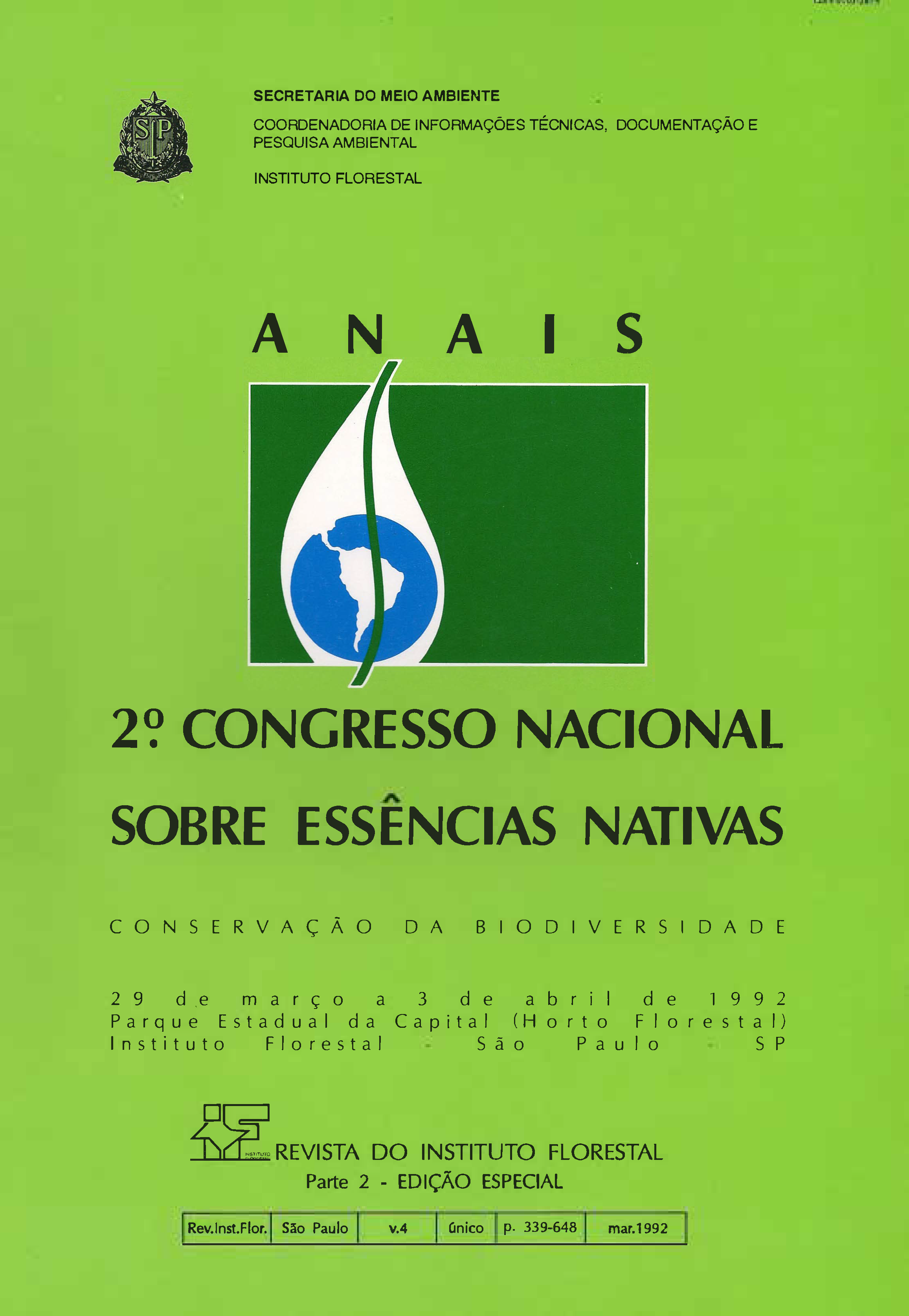FRUTIFICAÇÃO, PREDAÇÃO DE SEMENTES E ESTABELECIMENTO DE PLÂNTULAS DE TABEBUIA SERRATIFOLIA NICHOLS
DOI:
https://doi.org/10.24278/2178-5031.199241342Keywords:
Tabebuia serratifolia, seed, predation, establishment, frutificationAbstract
Botucatu county, located in the southern central region of the state of São Paulo, has some peculiar characteristics as far as different formations ranging from Mesofilous Semidecidous Forest to Savanas. Tabebuia serratifolia Nichols, that grows in that region, is a tree species, frequently utilized in landscape designs and urban arborization and naturally has been found in the transition area between Mesofilous Semidecidous Forest and Savanas. The purpose of the present research was to study the frutification habit, predispersal predation characteristics and seedling establishment of thé species. lt was concluded that frutification period spreads out from September to November, and the seed dispersai finishes at the middle of December, matchs with the hotest and wettest months of the year. Average fruit lenght and diameter was 20,9 cm and 1,21 cm respectively. The number of seeds per fruit was 139 and the percentage of predispersal seed predation was 33,2%. Simulated seedling establishment was higher in gap areas (18%) than under tree canopies (6%). However seeds left under three canopies for 45 days, and tested for germination under laboratory conditions, had higher percentage of germination (69,5%) and moisture content (39,4%) than those left in gap areas, wich showed respectively 22,5% and 33,8% for those characteristics. Seven seedlings average per square meter were found from the tree stem until 14 m but only 0,031 young trees were found in the sarne area, indicating that the percentage of recruitmen is less than 0,2% under studied conditions.
Downloads
References
AUGSPURGER, C.K., 1984. Light requirements of neotropical tree seedlings: a comparative study of growth and survival. Journal of Ecology, 72: 777-95 .
De STEVEN, D., 1981. Predispersal seed predation in a tropical shrub (Mabea occidentali Euphorbiacea) Biotropica, 13(2) :146-50.
ERNST, W. H. O.; DE CELLE, J. E. & TOLSMA, D. J., 1990. Predispersal seed predation in native leguminousshrubs and trees in Savanas of Southern Botswana. Afr. J. Ecology, 28: 45-54 .
FOSTER, S. A., 1986. On the adaptive value of large seeds for Tropical Moist Forest trees: a review and synthesis. The Botanical Review, 52: 260 99 .
PETERS, C. M., 1990. Population ecology and management of forest fruit trees in Peruvian Amazonia. ln: ANDERSON, A.B., ed.Alternatives to deforestation: steps toward sustainab/e use of the Amazon rain forest, p. 86-98. New York Columbia. University Press.
SMITH, T. J.111., 1987. Seed predation in relation to tree dominance and distribution in Mangrove forests. Ecology, 68(2) :266-73.
SORK, V. L., 1987. Etfects of predation and light on seedling establishment in Gustavia superba. Ecology, 68(5) :1341-50.
TURNER, 1.M., 1990. Tree seedling growth and survival in a Malaysian forest. Biotropica, 22 (2): 146-54.
VASQUEZ-YANES, C. & OROZCO-SEGOVIA, A., 1987. Fisiologia ecológica de semillas en la Estación de Biologia Tropical "Los Tuxttas", Veracruz, México . Rev. Biai. Trop., 35 (supl 1): 85-96 .
VORA, R. S., 1989. Seed germination characteristics of selected native plants of the lower Bio Grande Valley,Texas. Journal of Range Management, 42 (1): 36-40.















